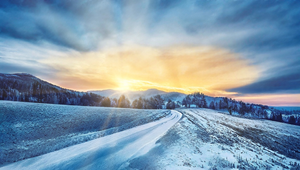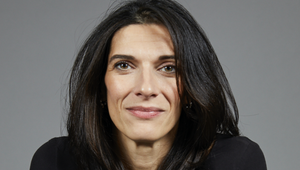
Why You Should be Shooting in Spain

Where is the best place to shoot your next project? This first in a series of interviews featuring select PSN Partners covers some of the determining factors that producers consider & some of the most frequently asked questions. PSN-Production Service Network founder Michael Moffett is also EP at PSN Spain. His insights can help producers decide why or why not to shoot in Spain.
Q> Can you tell us a few top reasons projects shoot in Spain?
MM> Pleasant year-round shooting climate in landscapes like California, classical European and ultra-modern locations and top-quality crew & equipment in a proven service industry delivering some of the most competitive production costs in Western Europe.
Q> How well does everyone speak English in Spain?
MM> Much better than when I first arrived here in the early '90s! But it is thanks to Spain building up an industry around its reputation as a fair-weather shoot destination, not unlike Hollywood in the US, that an English-speaking film industry has long been something you can count on in most all positions.
Q> How do local crews in Spain stack up?
MM> We have top-drawer professionals in all departments. While we’re happy to support a renowned make-up artist or hair stylist on a beauty shoot, for example, we can just as easily provide top-notch professionals locally. Animal wranglers, precision drivers, and special FX are on hand too.
We are also well-versed at supporting still photography in tandem with a film shoot. We’ve done so under the tight time constraints of celebrities, as well as the particular product demands of electronics. And we provide international caliber photographers to work locally upon request.
Q> Does a DOP need to travel in or do you have great ones in Spain with reels to present?
MM> We have a good selection of Spanish DOPs who are often called on to shoot at home and abroad. Many clients choose to shoot with our local DOPs once they’ve had a look at the show reels.
We can also provide local directors to fit a particular client brief. It may sound a bit unorthodox, but we did exactly that by request for back-to-back Sony campaigns in 2015. The Japanese client wanted an up and coming European director to deliver a decidedly hip storytelling approach. Our capacity to service a project locally knows no boundaries. We adapt to our clients’ local needs.
Q> How about art, construction, and wardrobe in Spain?
MM> Our crews can design it, build it, stitch it, and much more to spec. I’ve put that to the test in projects ranging from the staging of rock concerts to mass during papal visits – just hours apart on the same stage! But you can get more for your money by building from scratch in Eastern Europe. Projects are often shot in Spain because we already have the real-life locations such as modern and classic architecture, the seaside, mountains, and deserts that a project requires.
Q> What are the strong and weak points of casting in Spain?
MM> Talent rates are negotiable in most all instances. Client feedback on the demands for particular roles is critical in determining what rate will attract enough suitable talent to a casting session. This approach can require some careful calculation up front, but the resulting savings as compared to standard rate tables for buyouts are often well worth it.
We also can book top models directly to streamline casting and keep a lid on costs.
There is a limited supply of talent for English-speaking roles with a native accent. Not so with Spanish, but it is important to remember that the most common Castilian accent is distinct from Latin American accents in much the same way that a British accent differs from that of an American.
Q> Does Spain have a wide array of ethnic diversity?
MM> Faces native to Spain reflect the millenary crossroads that is this country’s history. There is a wide selection from fair-skinned Celts in the northwest to olive-skinned Andalusians in the south. We deliver it all in major cities like Madrid and Barcelona.
Spain’s ties to Latin America have made it a natural home in Europe for Hispanics as well. There is sufficient diversity to cast featured extras in roles calling for East Asian and black roles, and we can cast in London to boost the diversity when required.
Q> Are there talented performance specialists in Spain?
MM> Stunt men and precision drivers are readily available. Many more particular performers are already in the books of local agencies. We’ve also been successful with street castings of some performers and outreach at schools and academies related to a specific ability.
Q> What is the best season to shoot in Spain and why?
MM> Most projects come looking for sunlight in Spain. After all, we are the sunniest corner of Europe! Our standard 12-hour shoot day is too short to cover sunrise to sunset during summer daylight hours. But Spain can also be a strategic choice in the depths of winter. Many scenes from Doctor Zhivago were shot in the sierra mountains and countryside surrounding Madrid! Even so, it is the 300+ days of sunshine in much of the country that make Spain a near year-round location when much of Europe is on ice.
Q> How else has Spain played a part in feature films?
MM> My personal favourites are the renowned Spaghetti Westerns directed by Sergio Leone that staged the Wild West in the deserts of Spain. Spain’s epic filmography demonstrates the vast variety of locations to be found in our temperate Mediterranean climate. From classics like Lawrence of Arabia and Spartacus to more contemporary films such as Empire of the Sun, Star Wars II, The Gladiator, Green Zone, Indiana Jones and the Last Crusade, Clash of the Titans, Exodus, and two instalments of the Bourne trilogy. Long-format TV series Game of Thrones has also shot multiple seasons in Spain. Film incentives introduced in 2015 for non-commercial projects have bolstered the interest for international projects to shoot in Spain.
Q> What special traits or stand-out places in Spain do you think could serve as interesting storytelling ingredients?
MM> Not for nothing did producers of Tomorrowland decide on Valencia’s City of Arts and Sciences as a central location for the feature film starring George Clooney. Geographically, Americans can imagine Spain as the place where they’ll find all the natural beauty of California in Europe. It’s no coincidence that there are snow-capped Sierra Nevada mountains in both! Take a look at locations here.
Q> Does Spain have ample studio space?
MM> We have studios from the smallest to those large enough to stage multiple scenes on a soccer field for filming and still photography.
Q> How about back lots?
MM> Producers most often seek out Spain for its authentic settings. That said, the Poble Espanyol near Barcelona offers a controlled setting to recreate Spanish and/or Mediterranean village life. Some of the sets where cinematic legends including Clint Eastwood, Henry Fonda, Jason Robards, and Charles Bronson portrayed the wild, wild West are still in use at Fort Bravo in Spain’s southeast.
Q> Does Spain have any tricky production requisites producers need to know about?
MM> Shooting in Spain is not tricky so long as you work locally with a fully-insured, professional shop like ours. Adherence to Spanish labour laws and location permits – both with reasonably workable timetables for processing – is the first of a number of considerations we’re here to assist with.
And ignorance is not necessarily bliss. Producers working under budget pressures sometimes hire a local “fixer” in an effort to cut corners. They’re often uninformed that non-compliance with regulations can prompt local authorities to halt the production immediately and issue costly fines - much to the embarrassment of their clients.
And since the bottom line is often top priority, foreign producers need to know that a production service company can save them VAT and negotiate deals with local suppliers that more than compensate for the standard service markup applied to services.
Q> What local delicacies or traditions do your clients find intriguing during their stay in Spain?
MM> The revolution of Spanish cuisine personified by Ferran Adria is trickling down from the many Michelin-starred restaurants here to make meals an authentic experience – even at our catering! More traditionally, Spain remains among the top 3 countries in seafood consumption so there is no shortage of variety. And while few have the stomach to attend a traditional pig slaughtering, many visitors enjoy the salt-cured jamón. Paella comes in several varieties, including vegetarian. But it is the omnipresent tortilla española (no salsa please!) that everyone loves.
Spain is also synonymous with fiesta and siesta (though not on set!). Full enjoyment of the former makes the latter a much-needed way for visitors to recover. Early morning flights after a wrap party are not recommended unless you wish to go all night and breakfast on chocolate and churros!










